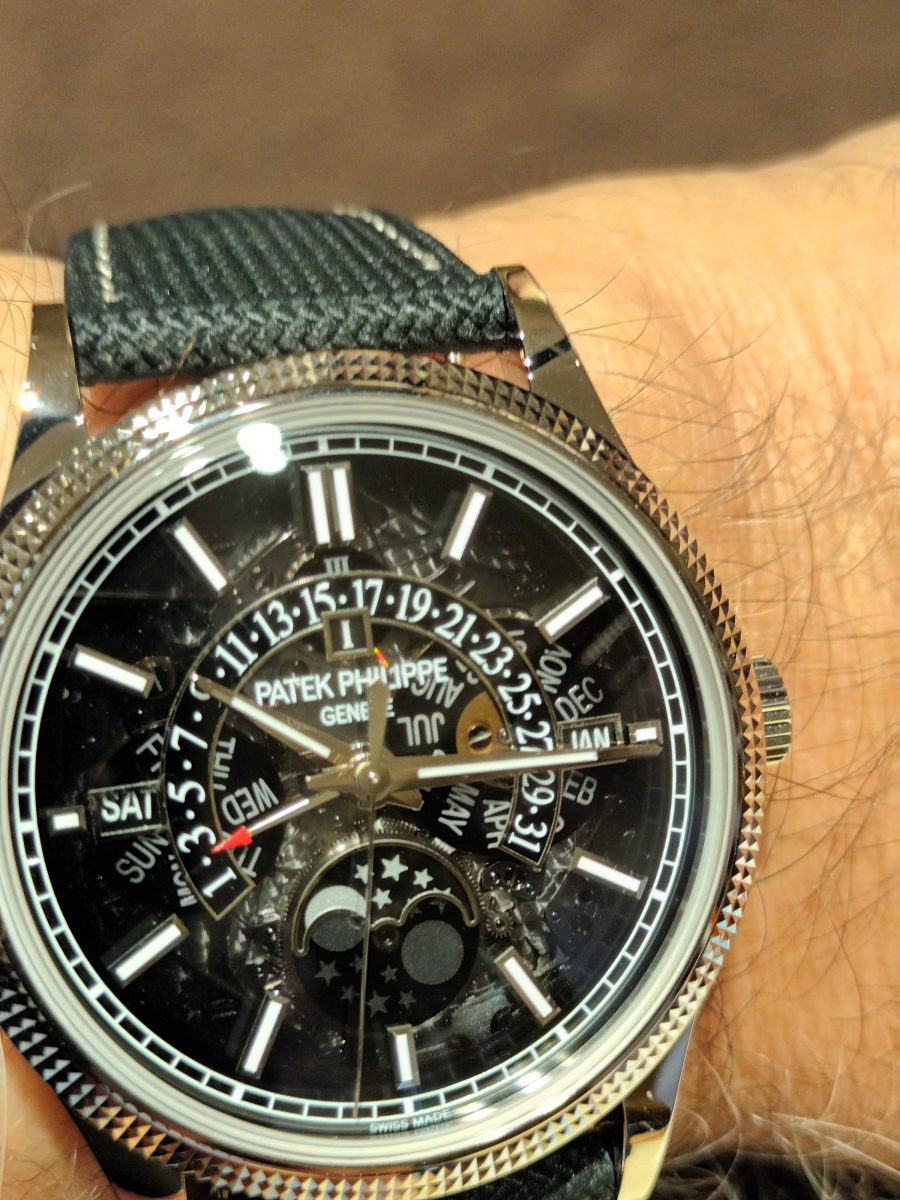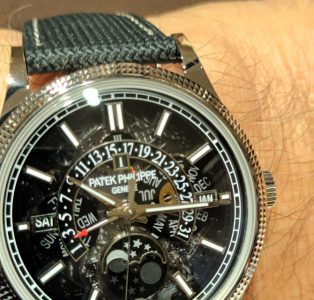Before getting into things, I just wanted to mention an article I read the other day by Johnny Davis (in Esquire’s About Time). It was essentially saying that the reason someone buys a watch is mainly how it looks. Various august institutions have also done research on this so it is kosha. To say “I could have told you that years ago” sounds a bit pompous, however, that fact is true. I have, and always will buy a watch first on it’s looks, and then come other aspects – such as cost, quality, precious metal content (or not), and brand all come later on. There is no logical justification in buying a watch that ticks other boxes, but then you are unable to admire on your wrist! I am sure that the majority of watch fiends – and indeed most casual buyers out there have the same preference. I might add at this point that a little of all the aforementioned may in fact apply in the ensuing review!
So, now we come to the second Patek Philippe watch I studied in York recently. This is reference 6159G-001 in 18ct white gold – a Grand Complication piece new for 2025.
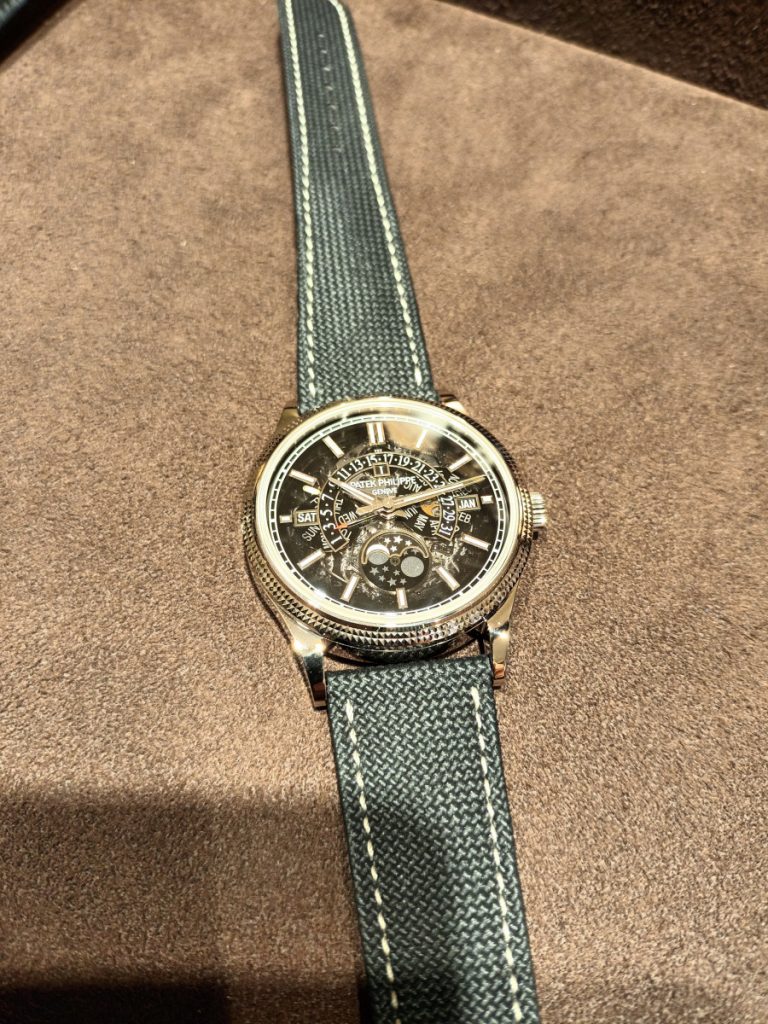
The case is of the Calatrava-type shape, and comes in at 39.5mm x 11.49mm. The case sides are polished, but the noticeable feature head-on is the bezel, with a curving-down hand-guilloched hobnail (or Clous de Paris) pattern. Again, a pretty standard crown is present, being of a useful size to manipulate. The reverse reveals an exhibition window – this and the front being of sapphire crystal. A waterproofing rating of 30m is provided.
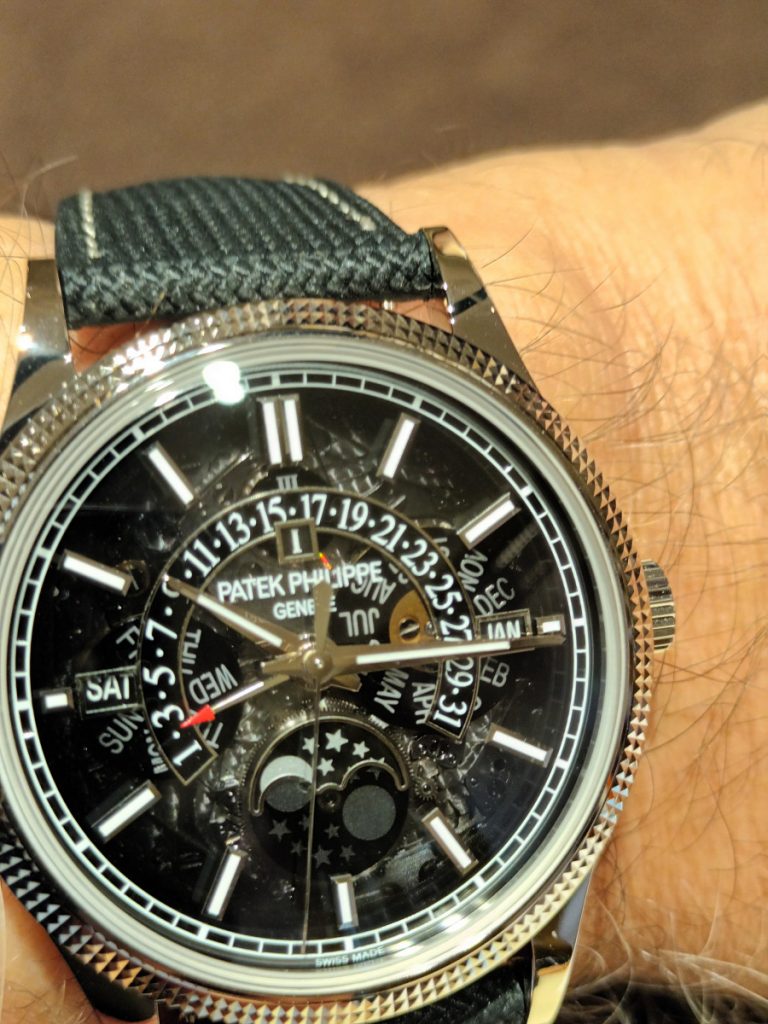
We now turn to the dial. Like the previous watch covered, there is a fair amount of information to be found here. This dial has a translucent graduated grey finish that is made of a metallized sapphire crystal. An outer rail track is present and then white gold rectangular batons with lume infill. Again, one is offered full calendar information (white on black) via the two framed windows at 3’oclock (month) and 9 o’clock (day). The date though is provided by a retrograde feature via a 270° arc with a small red-tipped pointer. The leap year indicator is at 12 o’clock – just within the date arc. At 6 o’clock a moon phase display is present. The main hands are sword in shape (dauphine) with lume infill – in white gold, as is the needle sweep hand. Returning now to the dial; whilst actual information is reasonably clear, one’s eye is distracted – initially at least, by the ghostly images of the month/days/moon, plus some of the actual movement. Although an interesting technical achievement to be sure, I simply cannot understand the actual merit of this aspect. It is neither a solid picture, or a skeleton view – but somewhere in-between.
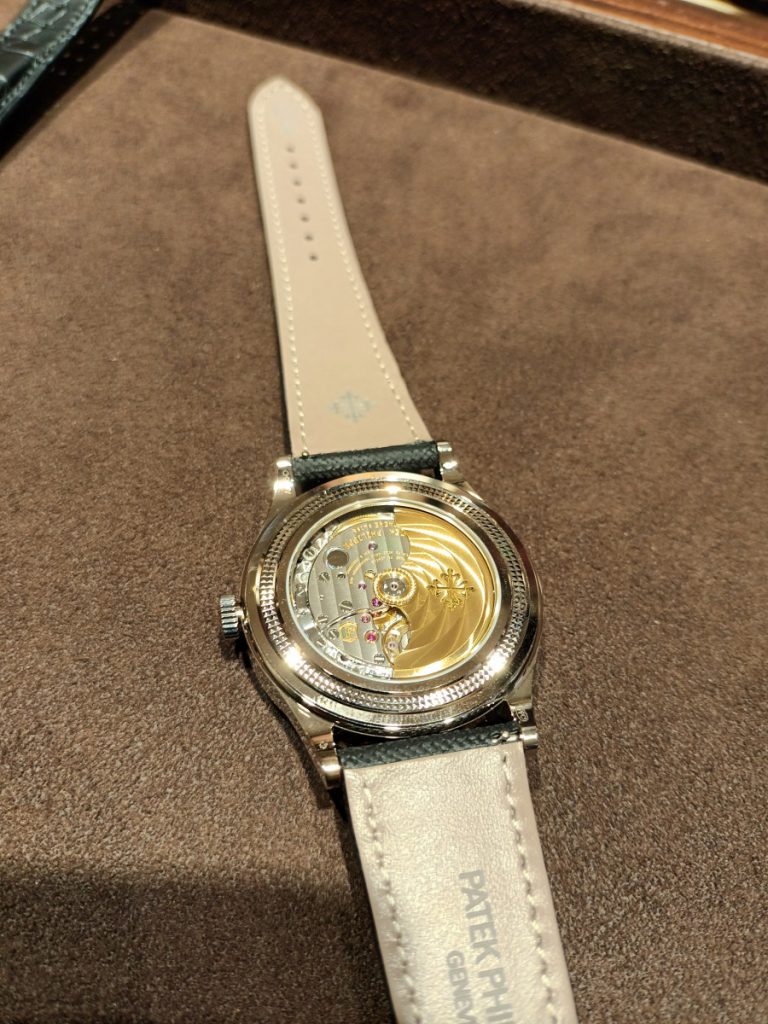
Regarding the movement, this is caliber 26-330 S QR. This has 29 jewels, beats at 28,800 vph and has power up to 45 hours. On this occasion the rotor is of a usual size and is made of 21ct yellow gold. As expected, some delightful decoration is present.
The watch is secured to one’s wrist via a black textured composite strap (with leather inner), and triple fold-over clasp of white gold with the usual Calatrava Cross emblem.
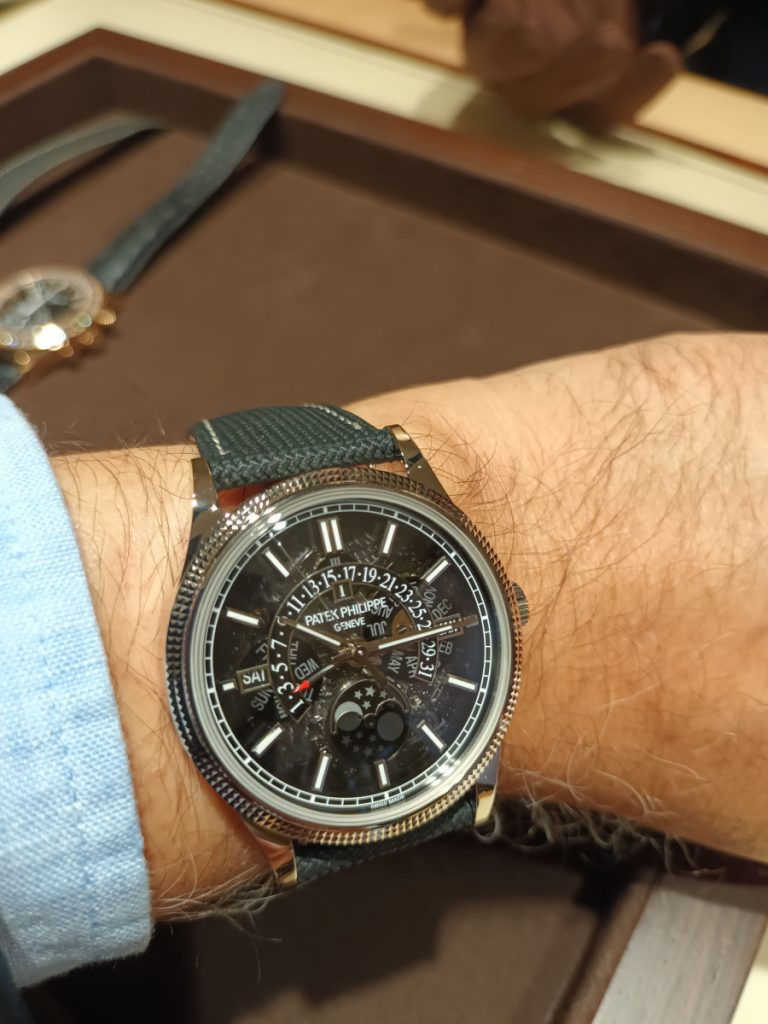
My conclusions? Well, it is technically a very interesting watch, and of course superbly made. However, contrary to some other reviewers, I do find the dial’s semi- transparency distracting. Yes, if you focus you can read the desired information, but my eye is also seeing the underlying “ghosts” too. For me, because you can, does not always mean that you should! In this case too, I am not overly keen on the canvas-looking strap. For a watch of this super high quality – with an rrp of £100,920 to boot, it warrants, and indeed deserves something rather more classy – like black semi-patent crocodile say. All that said, beauty is in the eye of the beholder. If my pedants don’t worry you and you have the cash, just splash it. I will always come over fawning and drooling to admire, even if it is not quite for me!
Words/Images: The Writer
My thanks to Berrys in York.

